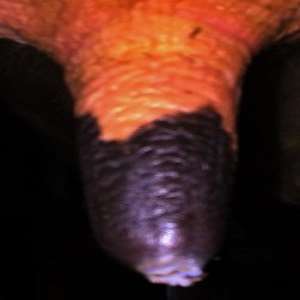Overmilking can damage teat ends and compromise udder health. A simple test can help you determine if you are over or under milking.

Traditionally, the recommendation to dairy producers has been to “milk ALL cows as completely as possible at every milking.” This recommendation has been revised due to recent research and field experience. It is impossible to milk a cow completely dry; there will always be some milk in the udder even after “complete” milk out because she is constantly making milk.
Overmilking is a matter of concern because it may affect teat condition and udder health. In the past, it was believed that all milk needed to be removed from the udder to maximize milk yield. However, breeding for high milk yields has provided cows with a high alveolar capacity. Due to this, cows are more efficient as milk producers.
Overmilking starts when the milk flow to the teat cistern is less than the flow out of the teat canal. Mouthpiece chamber vacuum typically increases during overmilking and fluctuations become larger. If the vacuum in the teat cistern is higher than beneath the teat end for short periods of time, the reverse pressure gradients across the teat canal may increase bacterial invasion of the teat cistern. Reverse pressure gradients occur only during milking of empty teats (Rasmussen et al., 1994), and overmilking will therefore increase the possibility of bacteria entering the teat. Teat end health is also greatly affected by overmilking. Hyperkeratosis of the teat is often experienced in herds with long unit on times.
Hyperkeratosis means excessive keratin growth. It is a thickening of the skin that lines the teat canal and the external orifice. Producers often notice a wart-like structure or rough spots at the end of the teat. This can be a result of poor milking management and long unit on times. Cows that experience these effects are often seen to have an increase in somatic cell count. This is due to the inability to thoroughly clean teat ends with hyperkeratosis, leaving bacteria behind to enter the teat canal during milking.
As you can see, overmilking and prolonged unit attachment can greatly affect your herd’s udder health. How do you test if you are overmilking? There is a very simple way to do so that can be done by anyone on the farm. The strip yield test looks at overall completeness of milking. It can be done two different ways, by hand or with a unit. I prefer to do this evaluation by hand, but your preference may differ.
To accomplish the test, immediately after milking, hand strip each quarter for 15 seconds, collecting the milk in a container. I use a plastic measuring cup. A properly milked cow should have about one cup of milk left in the udder, if there is more or less, then a milk out problem may exist on your farm.
Performing this test with a milking unit requires a little more precision. A milking meter is required to perform the test using this method. To do so, the milking unit must be reattached within 30 seconds of automatic removal and downward pressure applied. Continue applying pressure for 15 seconds before removing the unit. Record the amount of milk that was harvested using this method. Once again, about one cup of milk should be left in the udder.
If you discover that a problem exists on your farm with over or under milking, there are a number of different factors that can attribute to this. It is important to properly maintain your milking machines to reach optimum performance. If automatic detachers are being used, adjustment for timely removal of the milking unit can be critical to help reduce unit on time. If your farm is manually detaching the unit, employees need to be aware of the issue that is occurring and be more consistent in removing the unit as soon as “end of milking” is reached for each animal. It is important to look at your overall milking routine and have timely unit attachment and proper let down, quiet cow handling and timely unit adjustment, and proper alignment.
In conclusion, a few simple steps on your farm to prevent overmilking can help decrease your overall herd somatic cell count. Routinely perform a strip yield test on your farm to be sure units are being removed in a timely manner and make proper adjustments as needed to reach optimum udder health.
Source: psu.edu